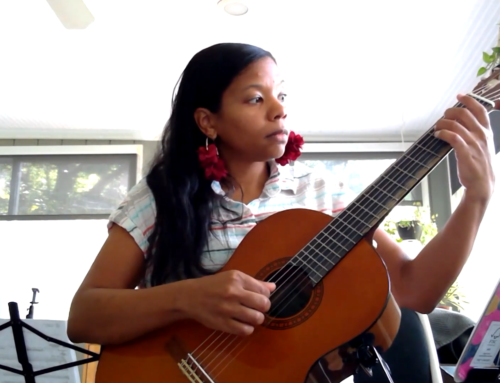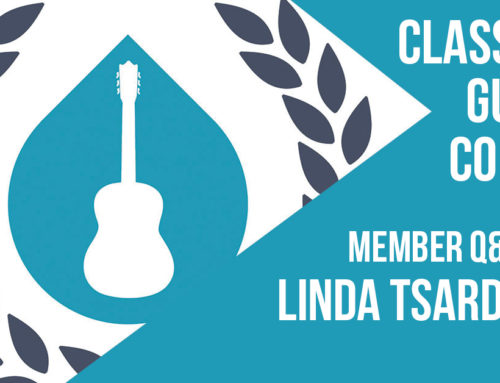Repertoire for this lesson:
Carulli Petit Caprice from:
10 Progressive Pieces
for Classical Guitar
Level 1
Staccato means ‘detached’ in Italian and it is a very common articulation found in music. Being ‘detached’ from another note means that there is a period of silence between one note and the next, the silence can be of any duration but it must be there. In a sense, guitarists are always playing staccato notes because of the nature of how we activate the strings. Every time we re-place a right hand finger on the string there will always be a break between the notes and on the guitar it is much more of a challenge learning how to play legato.
At any rate, the effect of playing staccato is all relative and we can definitely make a staccato articulation on the guitar that will add to our expressive palette.
There are two main ways of achieving staccato, one method uses the right hand to detach the notes and one uses the left.
Right hand staccato
As I mentioned, we are always creating a small staccato effect by placing our right hand fingers on the string in preparation to play. If we accentuate this motion, then we will get a nicely articulated staccato. To start off, simply play slow and steady quarter notes on the 1st string using the i finger, immediately after playing the string replace the i finger on the same string so you cut the sound.
Left hand staccato
Playing staccato note with the left hand creates a different sound, the sound is cut off in a slower fashion and the articulation is a little more rounded. The best analogy I can think of is a row of cubes lined up (right hand staccato) and a row of tennis balls (left hand staccato). Left hand staccato will only work with fretted notes (not open strings) and is achieved by placing the finger down when the note is played by the right hand and then lifting it off again. Once again, on the guitar left hand staccato will come more easily that left hand legato because our tendency is to lift off our fingers as we play.
For practice, you can use scales with alternating articulation. Once octave normal, one octave right hand staccato, one octave left hand staccato. etc. Of course, you can come up with your own exercises and start incorporating the articulation into your pieces.
Carulli – Petit Caprice from: 10 Progressive Pieces for Classical Guitar
Time to get a bit of speed developed in those fingers. In a way this piece is technically simple, at least compared to the last three pieces, but we are going to start adding some more ingredients to the music: scale passages, articulation, speed, and dynamics.
The G major scale gets a real work out here and I recommend playing a crescendo through each one of the scale passages. Experiment with using crescendi (this is the plural of crescendo) decrescendi and a variety of dynamics such as piano, mezzo forte, and forte. Also see where you might add in some staccato notes for articulation.
To start developing speed, I recommend using a metronome. Start at a comfortable speed, and keep increacing the speed by small increments. See how fast you can get, then slow it back down again. Over time you will build up the speed, but there’s no rush…




Leave A Comment